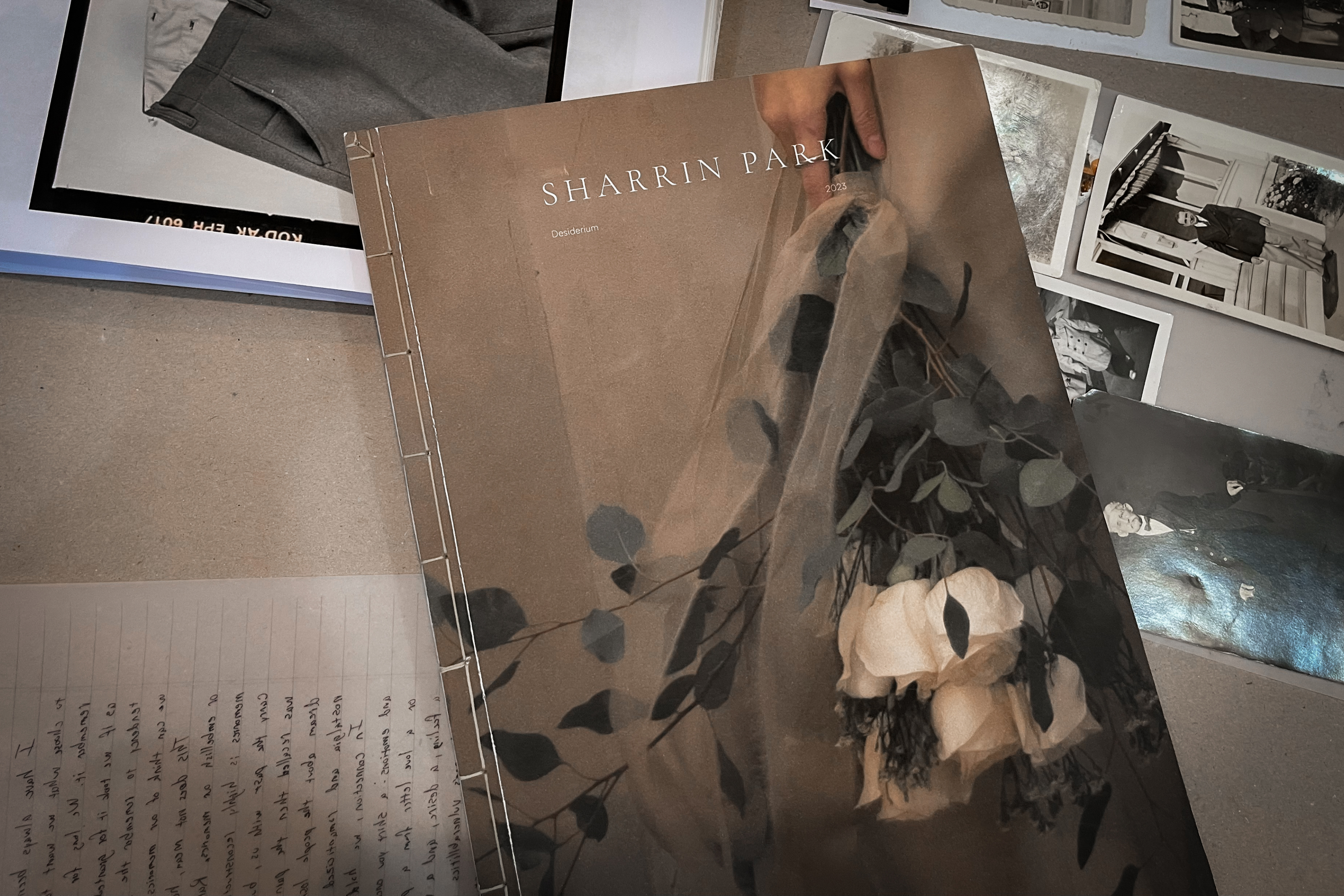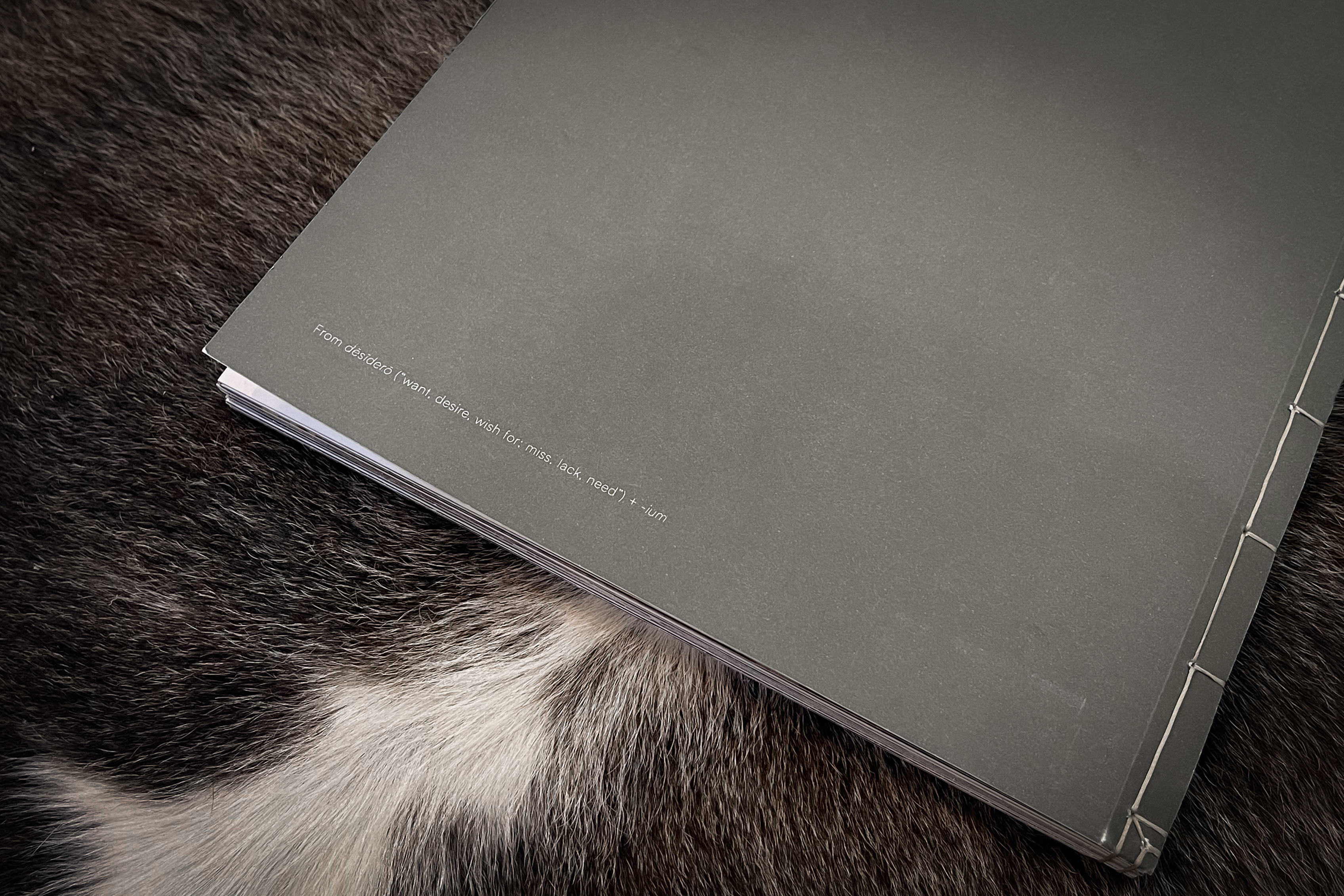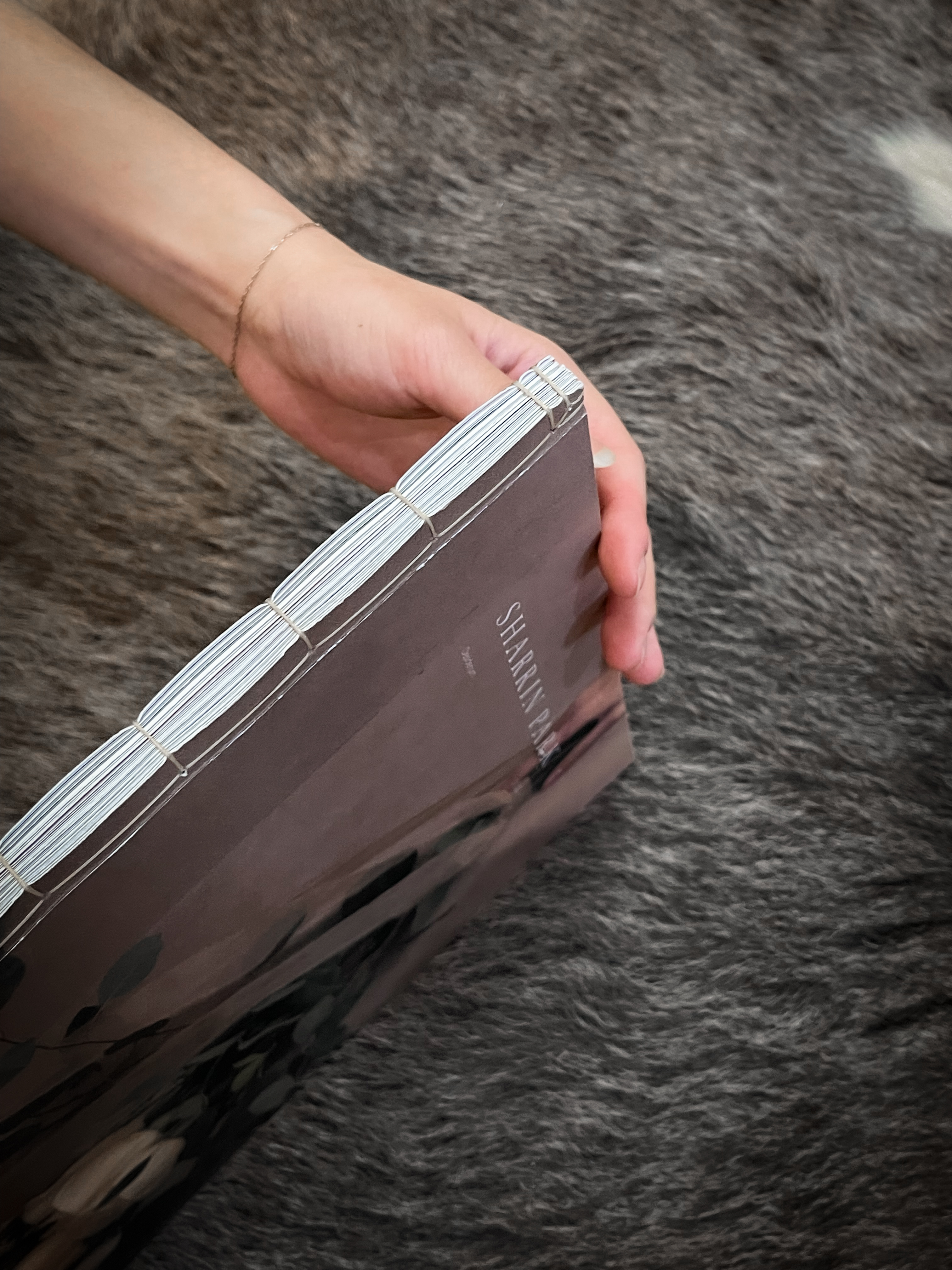Samantha Chun
Samantha Chun is a Korean American graphic designer based in New York City, originally from Southern California.
She studied at Parsons School of Design, recieving a BFA in Communication Design and currently works as the Design Director at Loftie.
Sharrin Park
Spring 2023
Editorial Design
Book Binding
Lookbook designed, printed, and constructed for Sharrin Park’s Fashion Design Thesis, Desiderium. Desiderium embodies the ideas of memory, nostalgia, and attachment. To translate these concepts into print and bookbinding, I decided that materiality focus, hand construction, and layout were going to be the most important factors of this book.
Vellum pages allude to the fading of fond memories that we long to hold on to—or maybe hurriedly try to forget. The thread binding this book together comes from Park’s garments, symbolic of all the borrowed objects we would never return because of our own sentiments. The playful layout of images and text is purposefully parallel to photobooks and scrapbooks one puts together with nostalgic memorabilia.
Statement from Park, more here:
I have always been intrigued by the human ability to choose what we want to remember and how we want to remember and how we want to remember it. We long for what’s gone or in the past, feeling as if we took it for granted. This is evidence of a cognitive tendency to remember the past better than it was. In a way we can think of our memories as romanticized, fabricated even.
This does not mean, however, that we consciously distort or embellish our memories. Rather, the process of retrieving memories is highly reconstructive and prone to biases. We must carry the past with us, but if a memory hurts every time it’s recalled then the pain would be unbearable. We shall dream about the people lost in our memories, preserved by nostalgia and romanticized by our broken hearts.
In connection, we hold onto objects that carry memories and emotions: a shirt you once “borrowed” but never gave back or a love letter from a previous partner. The objects signify a feeling, a desire, and a vast sea of memories that once revealed one’s vulnerabilities but now gives warmth as if they were a personal sanctuary.
![]()
![]()
![]()
![]()
![]()
![]()
![]()
![]()
Vellum pages allude to the fading of fond memories that we long to hold on to—or maybe hurriedly try to forget. The thread binding this book together comes from Park’s garments, symbolic of all the borrowed objects we would never return because of our own sentiments. The playful layout of images and text is purposefully parallel to photobooks and scrapbooks one puts together with nostalgic memorabilia.
Statement from Park, more here:
I have always been intrigued by the human ability to choose what we want to remember and how we want to remember and how we want to remember it. We long for what’s gone or in the past, feeling as if we took it for granted. This is evidence of a cognitive tendency to remember the past better than it was. In a way we can think of our memories as romanticized, fabricated even.
This does not mean, however, that we consciously distort or embellish our memories. Rather, the process of retrieving memories is highly reconstructive and prone to biases. We must carry the past with us, but if a memory hurts every time it’s recalled then the pain would be unbearable. We shall dream about the people lost in our memories, preserved by nostalgia and romanticized by our broken hearts.
In connection, we hold onto objects that carry memories and emotions: a shirt you once “borrowed” but never gave back or a love letter from a previous partner. The objects signify a feeling, a desire, and a vast sea of memories that once revealed one’s vulnerabilities but now gives warmth as if they were a personal sanctuary.







